In this article Gonçalo Lopes, better known to many as music composer and arranger Shiryu, talks about the lasting impact that Xenoblade Chronicles on Wii has had on his gaming life.
Being a European PAL gamer in the early '90s was pretty cool. Yet being a well-informed European PAL gamer in the same period was a nightmare. Sadly I was one of the later breed, the brave ones who ventured out every month to get the latest issue of magazines like Super Play. As such I was painfully aware that there were no big black borders on Super Nintendo games in America and Japan - their games ran at 60hz instead of our PAL 50hz and, worst of it all, hundreds of games never arrived in Europe, let alone my small country of Portugal. Even more worrying, role-playing games that provided the best value for money where among the biggest titles missing from European stores.
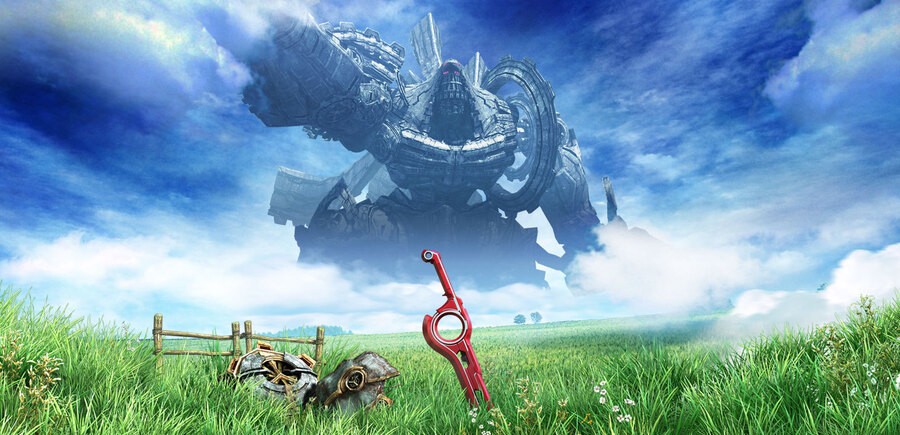
Taking The First Steps
Among all this misfortune, at least magazines did give me the knowledge of what to look for at import stores. It might sound silly today, but I can't stress how important a friend's "Final Fantasy Mystic Quest" US import was as a foundation of my love for JRPGs. It was purposefully simple, a gateway into JRPGS, made to teach American players how to play turn-based RPGs. Beautiful music that still brings back awesome memories sealed the deal, I began paying attention to RPG news on magazines, and it eventually paid off! I was the only among my friends to pick up Secret of Mana the day It arrived at the local retailer, showcasing the genre to a lot of my friends. I also wisely advised my cousin, a Mega Drive owner (no way one could afford both systems at the time) to pick up Soleil and Phantasy Star IV, two amazing RPGs (one action, the other turn-based). With the advent of CD home consoles like the Sega Saturn and the Sony PlayStation, the genre finally became a part of European game culture, with Nintendo's biggest loss - Final Fantasy VII being many western player's first ever JRPG, a genre that would sadly be largely absent from Nintendo's cartridge-based Nintendo 64.
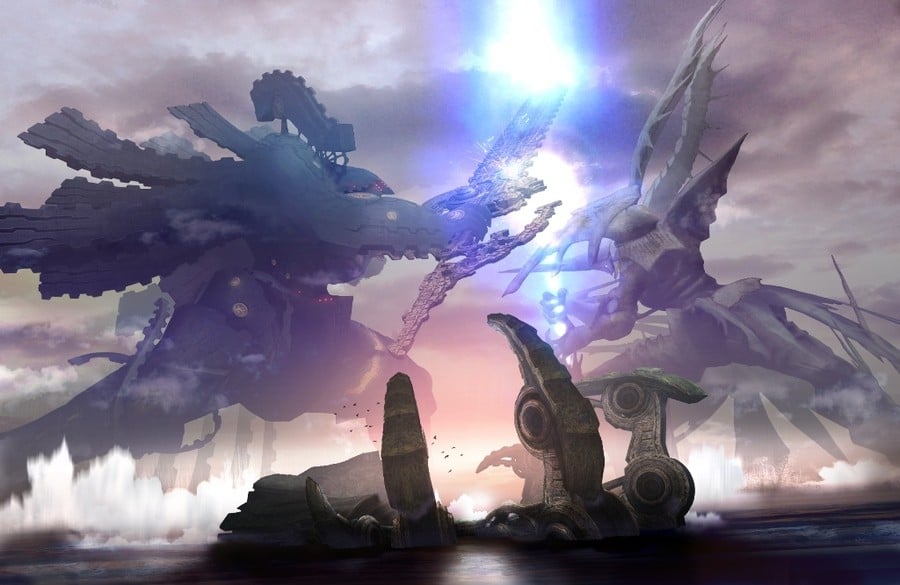
Signs of Trouble
Sadly when Square and Enix became a single company, I began to notice the talented people who had brought such classics like Final Fantasy VI to life on 16-bit systems were leaving the company to start their own, smaller companies. Coincidence or not, for some reason Playstation 2 era JRPG's somehow felt hollow, generic, shallow, same old, same old. For example I lost the will to complete Final Fantasy X, something that had never happened before with such a genre of game; I had never left JRPGs halfway. They were no longer good value for my money; I found them often boring and anticlimactic. I believed the problem was surely with me, possibly still too stuck to the old ways. All the amazing graphical advances and I kept longing for the perfection of the simpler days of Chrono Trigger. The GameCube situation was somewhat better, despite the very small number of JRPGs out in the west. I did manage to rather enjoy the upgraded Skies of Arcadia Legends from SEGA, spent blissful weeks exploring the fantastic world of Namco's Tales of Symphonia and customizing decks of cards in Baten Kaitos: Eternal Wings and The Lost Ocean by Monolith Soft and tri-Crescendo. I eventually upgraded to the Wii and despite having dozens of games of different genres coming out monthly, I believed my JRPG days were over. They would never be able to get back to the epic tales of past generations and I, now a fully employed responsible person, would never be able to again sink in dozens of hours finishing a video game.
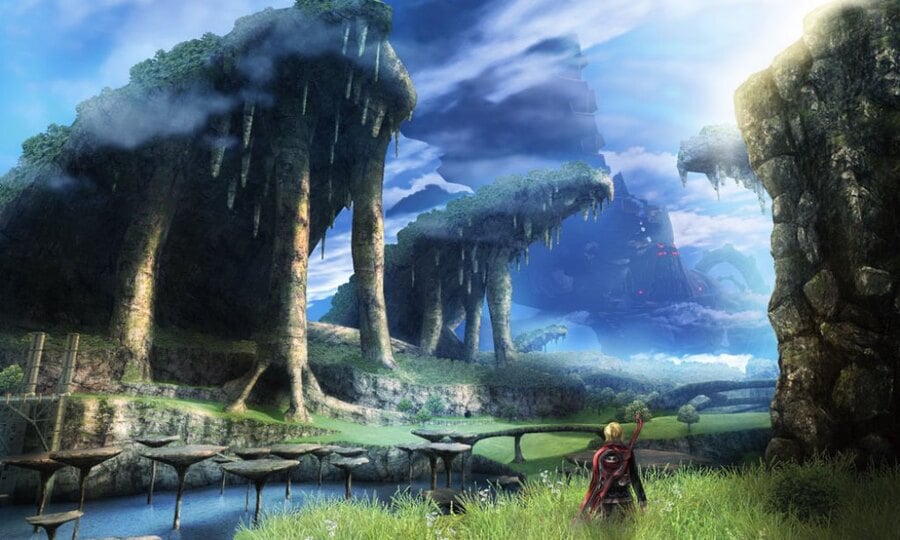
Bionis By Day
"Monado: Beginning of the World" showed up in a small, just over a minute trailer during E3 2009. I was somewhat fascinated by it. Unlike most Wii third party offerings the graphics were indeed just as good as past first party Nintendo GameCube games (this aspect was something I always hated during that hardware generation, most often than not every time I bought a Wii third party game I ended up with a port using PlayStation 2 graphics and a lack of proper optimization), it showcased enemies who were absolutely huge over vast landscapes, on such an epic scale that it was able to dwarf the biggest open area of The Legend of Zelda: Twilight Princess. I was a bit put off because combat seemed to be lifted from MMORPGs, something that had become a sort-of rule that is still going strong today: make all RPG's look, feel and play a bit like World of Warcraft. I had spent some time playing those types of RPG, in fact all the way back to Ultima Online. I quickly realized those are not for me. Like a good book, I like my RPGs to have a beginning, middle and an end. I'm also a rather busy person, so the ability to shut down a game and go back to it at a time of my choosing is essential. I own my video games, I do not want my video games owning me, which is often the case with online affairs.
But back to the mysterious "Monado": Who was making the game? That would be Monolith Soft. That deepened my interest due to fond memories of the fantastic world of Baten Kaitos back on GameCube. Who was the director of the game? Tetsuya Takahashi! Now there is a name I did recall from as far back as Super Nintendo! So "Monado" was part of the Xeno series? XenoGears remains one of the best US imports I got on my PlayStation. By the time Nintendo announced the rebranded Xenoblade Chronicles would come out mid-August 2011 in Europe, I was already counting the days to the release, with its fancy red box and red Classic Controller (yep, no fancy motion controls here, Nintendo wanted to make sure everyone knew the proper way to play this game).
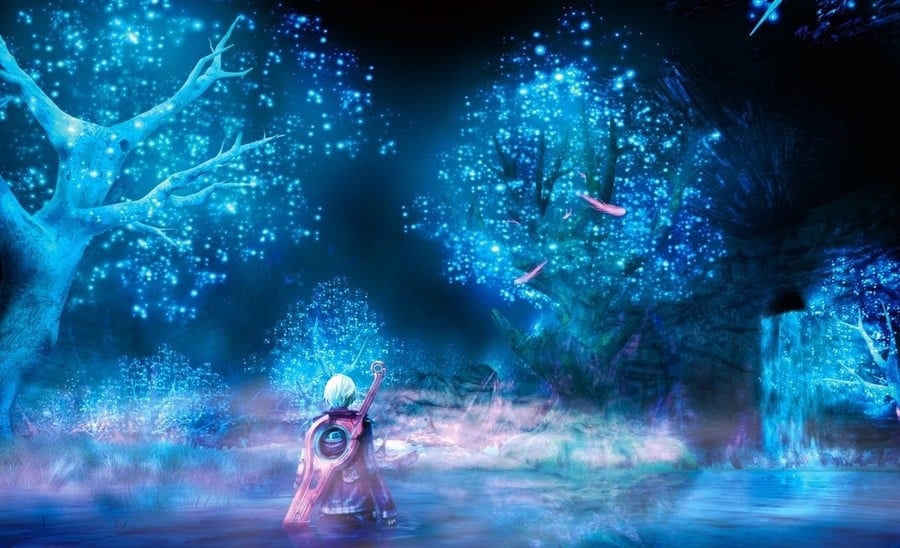
Mechonis By Night
The first time I booted the game I was greeted with the titular Monado sword resting on the ground, with a night and day cycle looping while the beautiful main theme by Yoko Shimomura (of Street Fighter II fame, among many others) played along. Right there and then I knew I was about to begin something special. I could not however have any true grasp of what an amazing adventure I was about to embark upon. Even today it is very hard to explain to people who never played it why Xenoblade Chronicles is so special in this day and age, a game that transcends its supposed technological limitations of the Wii when compared to its rival machines PlayStation 3 and Xbox 360, which could never offer me anything that remotely resembles this game.
That is not land you're standing on. You are on Bionis' right calf. Wait, what? Who or what is a "Bionis"? A white, giant organic titan god. In battle he was fatally wounded while also delivering a fatal blow to Mechonis, a dark mechanical god. The world of Xenoblade Chronicles exists in both the outer and inner body of these two majestic titans, forever stuck in the stance of their demise. Talk about an epic opening. The first hours of the game are a crash course into the game's world and controls, with the relative safety of Colony 9 shielding you and companions from the larger, epic world just beyond. Even just taking a few steps off the path will "reward" you with the knowledge that engaging enemies which are too many levels above your current level is a really bad strategy. Yet Monolith has them sitting right next to you at the start, as if they want the player to risk it. I often wonder if they made this on purpose or it was just accidental game design.
In good JRPG fashion or any great adventure in literature disaster will soon strike home, and your party will be forced out into the vast, perilous world. When you reach Gaur Plains and gaze upon the distant horizon, you know you won't be finishing this game any time soon. The music is also part of the magic. While the mammoth enemies that roam the land certainly do no harm in transmitting the epic scale of this world, part of the sense of grandeur comes straight from the soundtrack. See something in the distance? Walk in that direction far enough and you will be there. And always looming somewhere even further away, impossible not to spot day or night in the distant horizon stands the colossal Mechonis, an incredibly menacing presence, always reminding the player that eventually they will have to go there. The game manages to present such an epic scale that it is almost uncanny this is running on the humble Wii hardware.
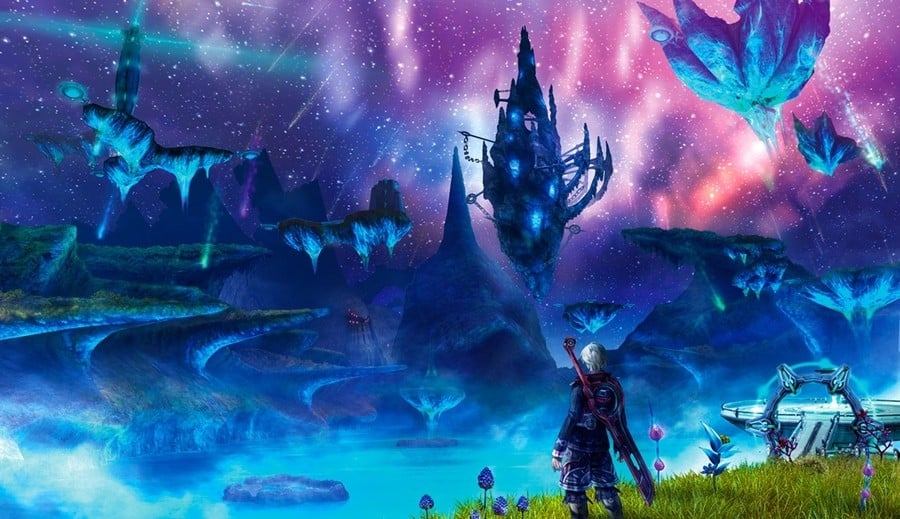
War of Two Truths
CAUTION: In this section I will be giving out a few plot spoilers, so please skip this whole paragraph if you never played the game.
The narrative clearly induces the player to believe they are a part of the Bionis faction since we are, after all, humans. As such, everyone living on the body of Bionis is "our side". Often the "other side" conducts raids on our colonies which seem to have no purpose other than to eradicate living organisms. Right off the bat the game teaches you to fear the Mechon, bizarre mechanic creatures, soldiers of Mechonis that come in all shapes and sizes who fearlessly roam Bionis attacking all living creatures. The "bad guys"! Surprisingly early in the game the plot pulls a Aeris / Alys (for Final Fantasy VII / Phantasy Star IV fans respectively) on the unsuspecting player, giving us further reason to hate the Mechon, to seek retribution and to seek all out revenge on everything Mechonis.
After a few dozen hours poured into the game the player will reach the place where the game's introductory prologue played out: Galahad Fortress in Sword Valley, named so because it sits on top of the sword Mechonis used to deliver the fatal blow to Bionis. It was in this place I truly felt overwhelmed at just how massive and numerous the Mechon truly were, as the gigantic clockwork horrors roamed every possible pathway forcing the player into confrontation in order to advance. After the hardest trek in the game thus far, a truly unexpected turn of events, the player finds themselves alone, having to gather everyone from the party in Mechonis field, by all intents and purposes hostile territory. This was when the game truly tricked me and I fell flat face first on the floor. While I was already preparing for a fight, induced by what the game had taught me thus far, I was introduced to the Machina, the true people of Mechonis. Instead of a fight, they offered help and a safe place to stand on Mechonis, the Hidden Machina Village. It was there that they tell us the Mechons are nothing by mindless drones, war machines they created long ago but have since been running rampant beyond their control; in fact they too are victims of their own creations as are the inhabitants of Bionis.
I then felt ashamed. It is part of human nature to fear the unknown, to harbour prejudice against those who are different, to be misled by our own small vision and knowledge of the world. It is incredibly rare for me to be tricked by a video game like this, if ever before. I just have to go ahead and say it: The game played me like a dammed fiddle! Here I was fighting every day with the notion of achieving revenge and ultimate victory for the "good guys", filled with such righteousness when, much like in the real world, the line that divides good and bad in a war is shown to be unclear. The truth, as they say, is the first casualty of any war. And this was but one of several plot twists still coming ahead…
CAUTION OVER: Spoilers end here.
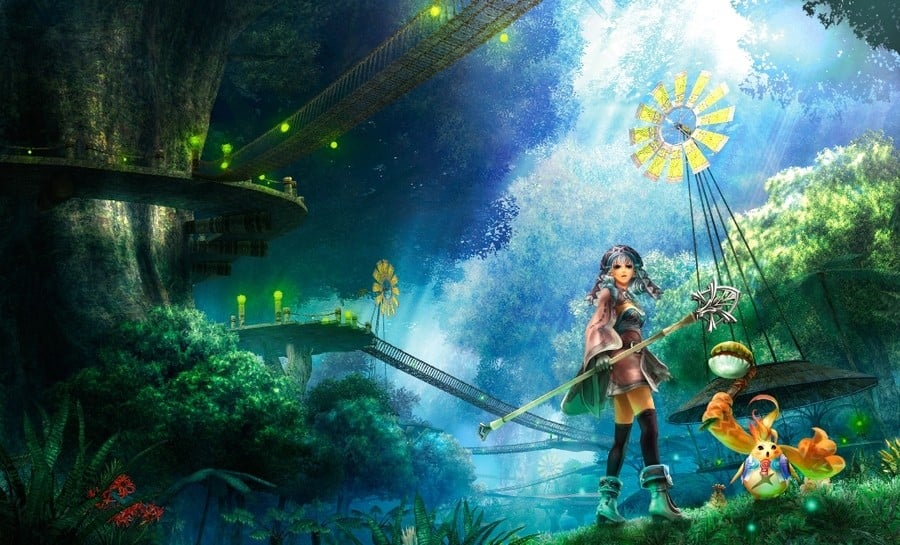
Building Worlds Worth Exploring
Monolith Soft had previously already proven that it was capable of creating fantastic worlds, and populate them with enough interesting characters that act according to well delivered scripts, with both "Baten Kaitos" games on the GameCube. They also move the plot at a fantastic pace, without any points where the player feels that they need to spend ages grinding to level up so they can tackle that one boss that stands in the way of further plot development. They managed to raise the bar so unbelievably high with Xenoblade Chronicles that it not only remains my favourite Wii game ever (yes, even above Nintendo's fantastic The Legend of Zelda: Skyward Sword) it simply stacks up as one of my favourite games that I've played in the past three decades I have been a gamer. However, I somehow fear the brand new - to Western audiences - Xenoblade Chronicles X might fail to be as engaging as its predecessor. I went to the first game with no expectations and this was one of the reasons I caught so off guard by its brilliance. I am going into this new one with unbelievably high hopes. After all, there is a whole new world to explore, filled with all new dangers and rewards at an even bigger scale… and giant robots! How can it possibly fail, right?
This time you're not even given a character to play out, you make your own, something that was changed mid-development in order to better immerse the player in the perilous adventures on Mira. My original and still only saved game data on the Wii clocked at a somewhat impressive 96 hours and 45 minutes. You can be sure I strayed a lot off the beaten path and the game kept rewarding me for it. Due to Monster Games somehow managing to cram all of this greatness into a tiny New 3DS game cartridge, we all can now do so anywhere thanks to the power of Nintendo's portable gaming system.
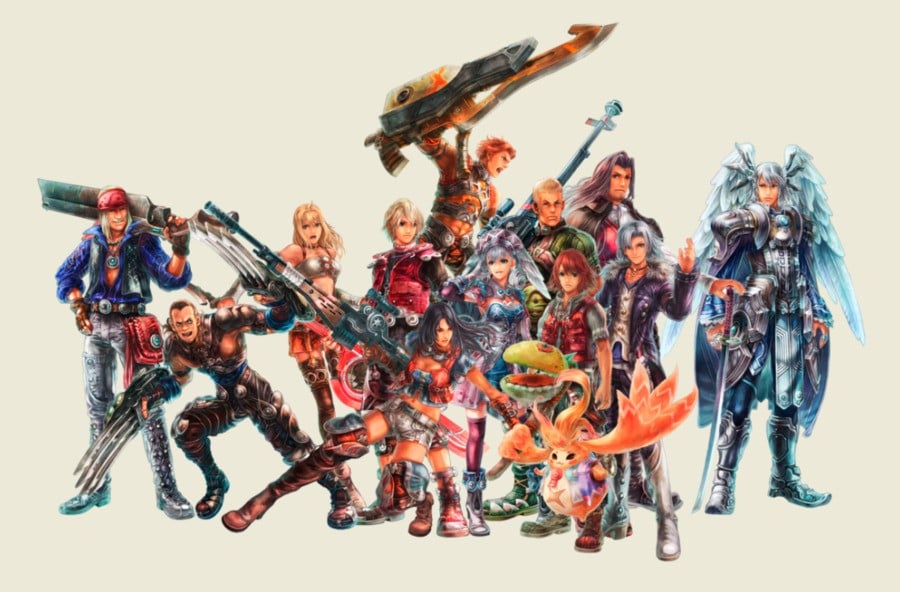
Brave New World
Anticipating another huge portion of my life gladly taken from me, I have cleared my whole schedule for December to properly enjoy this new entry (with some time out for Star Wars Episode VII too, of course). However, from my close circle of friends and despite some having played and agreeing that it is a breathtaking adventure, I was one of the very few who actually completed the first game. And since I can't tell them why it is such an amazing experience without spoiling them, it's a pickle to explain to them and other people why Xenoblade Chronicles X is enough reason to own a Wii U this holiday season. I hope this article will help get a few more people to pay attention to these two games… onwards then, the wonders of planet Mira await and the Skells don't pay for themselves. Will I be seeing you there? I hope so!

Comments 72
Whenever I reccomend Xenoblade to someone I cannot give an explanation I simply say: "Its one of the best games (if not the best) I ever played" which its true to this day, few JRPGs make me keep playing after I beat them and I'm currently on my 5th play through on the Wii while I wait for X.
Nice Hobbit reference, there. Makes me sad to think we are still, to this day, waiting for a game based on the LotR universe that would make justice to it. Maybe one day, one day our paths will lead us there.
Xenoblade Chronicles managed to capture the magic that games like Final Fantasy IV, VI, IX and Tactics had. The world felt alive and was full of these small rewards for exploring and hunting down secrets. Where the Final Fantasy games focused on great characters, the world itself was the character that I couldn't walk away from with Xenoblade Chronicles. I wanted to explore and understand it's history and lore.
It's sequel is something I cannot wait to start. To lose another 100 hours seeking it's secrets. Zelda U is the only other Wii U game that I look forward to this much and Batman: Arkham Origins was the last game that reached this feeling for me (only to slightly disappoint).
@Shiryu My compliments, you've written another great article which was a joy to read and it brought back many cool memories, being a JRPG fan (and retro gamer) myself. I dare to say this is even better than your F-Zero article, which was already up there with the better articles to begin with.
And I'm also still enjoying your frequent retro playthroughs on YouTube since I subscribed. Keep em coming! Articles too, obviously...
muito obrigado,
Cheers.
@TheRealThanos Why thank you, I had not notice it was up. One article left to go...
@Shiryu I'll look forward to that and I'm pretty sure I'll enjoy reading that too... (unless it concerns a game that I don't like, but chances on that are pretty slim since I have a pretty broad taste in both games and platforms)
@TheRealThanos It's about a GameCube genre that no longer exists in current Nintendo hardware, it's really in depth, it's huge, the biggest thing I have ever written. Hope it will be up before 2016, I've written it back in the Summer.
@Shiryu If I was a hater then I would probably have said that your upcoming article must be about third party software, then...
But you've really have made me curious now, so I will be paying attention to when it finally lands on NLife. Hope there's plenty of memories to be found in it. I always enjoy taking a trip down memory lane, when gaming was still a great hobby without turning into a war zone...
@TheRealThanos The Internet gave us much, but it also took away quite a lot, most people just don' realise it... yet.
Thank you, Gonçalo, for the spoiler warning - an obvious thing but so often ignored when people discuss great games. I'm currently about 12 hours into my first Xenoblade Chronicles playthrough and appreciate staying spoiler free (I hope the rest of this comments section does too).
Nice article, I look forward to coming back to the middle section when I've finished the game.
Muito bem Shiryu!!!
It's my game of the generation, one of my fav ever - and I'm also portuguese
I'm still playing it until X arrives, trying to beat those 90+lvl baddies
@gcunit I envy you the adventure still ahead. Good luck!
@Desy64 I still fear those level 99 bad guys... much like the Ultima Weapons in FF7, those are made to make sure you never feel too powerful in the game.
I have to say that I didn't read the whole thing due to limited time, but from what I have read, I got few question marks..
You said that by the PS2 era, you got burned out from JRPG because they were the ''same old, same old'', but then you go on and say that you ''possibly still too stuck to the old ways'' and ''kept longing for the perfection of the simpler days of Chrono Trigger.''..
Another interesting thing that I noticed that you didn't say anything about JRPG handhelds (from what I have read at least), which is interesting, seeing as how most of the good ones where moved there (Fire Emblem, Dragon Quest, Monhon etc..)
@GMB-001 "stuck in the old ways" as in in the 16-bit era programmers, artists and musicians had to make miracles with the limited hardware to trick the player into a sense of scale that was beyond expectations, think "Terranigma". Int he age of 3D and CD/DVD, everyone seemed to be so happy to use technology for the sake of simply using it because it was there, they forgot how to build worlds, characters and stories worth investing time in.
Yes, I did find solace on the GBA most of all, stuff like "Sword of Mana", "Final Fantasy 1&2", "Final Fantasy Tactics", both "Fire Emblems" were dreams come true. The GBA was the closest there was to owning a portable SNES, it remains one of my favourite portable systems ever, second only to the original brick GBA.
@Shiryu Unfortunately, most of these people are from the internet generation themselves, so I doubt if they will ever get it. I have tried several times to explain to some of the younger kids in my family that there was actually a time without internet (and the euro) but they simply couldn't wrap their head around it or had difficulty understanding how I could have possibly "survived"...
But I suppose it's simply one of the downsides of progress: the sh** that comes with the good things that it also brings us, which in this case is a much easier and improved way for avid gamers to share opinions, stories and memories instead of maybe having your story posted on a letter page in a monthly magazine...
@TheRealThanos I concur.
Great article! Xenoblade Chronicles is most definitely one of the best games in my 30 years of gaming. I clocked 185 hours and still had secret bosses to fight. Its such a memorable experience. I hope X lives up to its lofty expectations.
Im currently on my first playthrough of XC (About 3 hours in) and can already see why so many people love it,I cant believe I had this in my hand when it came out and put it down and got a PS3 game I cant even remember the name of instead,Im not gonna make that mistake again come friday that for sure.
I picked up Xenoblade Chronicles when I started building my Wii collection in earnest and it was very hard to put down. It gave me the same excitement as I had playing games like Phantasy Star 2 and 4, Panzer Dragoon Saga, Skies of Arcadia, Grandia 2, Wild Arms 3 and Golden Sun. It remains the Wii game I have put the most hours in, and was well worth the money I spent on a copy with the classic controller pro. A fantastic article!
Nice article. I felt similarly about XC though I actually found the PS2 Era to be a good time for JRPGs, well compared to PS3 anyway. Rogue Galaxy is still 1 of my favorites, and Xenosaga 1 and Dark Cloud 2 were good. Also Star Ocean: TtEoT. And I really liked FFX, and FFXXII. Though FFX-2 is one of the worst games I've ever played, and FFXII had the lamest storyline. Kingdom Hearts was also new and unique, though 2 seemed all wrong to me. And DQ8 was the first JRPG I played thst I felt was "open world", even though I didnt know what that term meant back then. PS3 had WKC which I never liked, and I skipped Eternal Sonata. And FFXIII was lame. And Wii had the worst game I've ever played in FFCC:TCB.
So there were a lot of good years on PS1, PS2 and Gamecube, but then several years of drought, thought I was done with JRPG. I even played the first 15 hours of XC and then didn't touch it for a year, it just seemed more of the same. Really glad I went back to it though earlier this year, it is one of the best JRPG I've ever played.
And while I'm really looking forward to XCX, my expectations are in check. It just can't be that good. It can't. But that's ok, I'll be enjoying every hour of it. I put in over 150 hours on XC and I'm still not done. Main story is long done, but I have a few creatures to hunt yet, and a sort of secret area to get into.
Oh, just remembered Arc Rise Fantasia on Wii. Worst voice acting in a video game ever, but it was fun. Though some big exploding plant wiped me out halfway thru the game and I never got past it.
I'm in the same boat on Xenoblade. Aside from the last 3-4 hours of the game, I honestly can't think of any other gaming experience that comes close to what Xenoblade offers. I've played a few games that I've enjoyed more than XC, but there's something about it that truly was unique and unexplainably enjoyable.
And I'm glad you pointed out the soundtrack. Playing XC really shows you how much a perfect soundtrack can engross the player.
@Shiryu By the way: I saw you mentioning some GBA faves earlier, some of mine among them (Fire Emblem), but the RPG game that I played the most on the GBA was Shining Force. Did you play that one and what do you think of it?
Thank-you. I wish more people understood this game!
Thank-you. I wish more people understood this game!
It's amazing how this game manages to constantly change your view of the game world and what you thought was your main goal. One of the few games that felt like a real adventure, and across 60 freakin' hours no less! I mean when I was 5 minutes into the game I thought it was going to be one thing, and then 30 minutes into the game I thought it was going to be another, and by 5 hours in I was like, I'm just going to enjoy the ride! To top it off, it had a unique combat system and hilarious voice acting (Now it's Reyn time!)!
It makes me sad that no one else I know off the internet has beaten the game, let alone just play it, as I really feel it's one of the most pinnacle examples of what gaming is about, at the very least RPGs.
Of course there are plenty of things in the game I don't like, but the game experience is unlike any other video game I've ever played.
Which makes me a little sad for X, because the preset characters is what really made me care so much about the game in the first place (that intro hooked me immediately). I couldn't imagine playing the original with Shulk. X will still be good, but it won't beat the original, that's for sure.
@Shiryu I'm sorry about the multiple posts. I have no idea what happened, but the reply button didn't seem to work and all of a sudden I posted that comment five times. The site seems to be somewhat f***ed up since initially, I couldn't delete them too and I kept getting "The connection to the server was reset while the page was loading" and "Error 503 Backend fetch failed" errors when trying to refresh the page. Must be a site maintenance issue or some disturbance. Highly annoying...
@TheRealThanos I'm getting it over here too; tried to delete my double post for like 5 minutes. It's definitely on Nintendolife's side.
@MasterWario Yeah, I saw that I wasn't the only victim...
@Shiryu Understandably, this article was more of a love letter to XC, which I subscribe, even though I haven't still finished it. And in a few days the new adventure will start, welp!
But maybe one day you should write an article (or a book, who knows) about your gaming memories, it seems like you still have most of them intact. I'm very envious, as unfortunately all my gaming memories are there in my head, but all intertwined, overlying one another, some clear as day, others fading. Maybe that's because they're too many, having started gaming in the -now far- '84, with my faithful C64.
Or maybe I'm just old... yes, that's definitely it, 😧
@Shiryu Caro amigo (dear friend)
You have written a glorious piece here. I share this JRPG passion with you. Being a Brazilian I can say that titles as Lufia: Fortress of Doom, Breath of Fire, Final Fantasy VI and Super Mario RPG were the first titles (with Mega Man X) that taught me English. But I had forgotten how wonderful is this genre.
Then, Xenoblade came to my life. I didn't play it all at once (took me almost 2 years to finish the game) and I can say I understood the game and its mechanics after 50+ of gameplay.
I finished it two weeks ago and I am still thinking about it.
Obrigado, rapaz. Fantástico esse artigo seu.
(Thanks lad. Fantastic article)
In some ways I miss the days of going to my local import gaming store and checking out the weird and wonderful games they had. However nowadays in Europe we are treated quite well (probably better than the USA, I think) I only feel like we've missed out on a couple of 3ds games this gen and the yakuza collection on Wii U is the only home console game that springs to mind. The e-shop has also allowed publishers to gamble with more niche releases which has been a bonus this gen. JRPG's have always been my favourites but nowadays for me sadly it's a case of trying to find the time to fit them in.
Great writing and certainly a feature I can relate to, we share similar memories. I would happily meet my piers in the new game but sadly I've moved to a remote place where connection is limited. Sort of like Mira I guess.
It's in my Top 5 games of all time, and I've been playing video games since the late NES days.
@EllenJMiller I was not expecting "Xenoblade" to be a better game than Ironobu Sakaguchi's "The Last Battle"...but despite being excellent, the scope of "Xenoblade" just put it's ahead! I still can't even begin to comprehend why Nintendo of America wanted to pass these up.
@rjejr Thank your for reminding me that I need to find a copy of "Rogue Galaxy" somewhere and play it.
@TheRealThanos Ah yes, I am a fan of Sega's shinning series, but have yet to complete the Megadrive titles. However, the GBA ones I did finish. I had a sort of strange period in my life where after the N intendo 64 was dried up, I bought a Megadrive and started collecting SNES and Megadrive games. The only console I had for a couple of very fun years that was "new" was the GBA and as such I devoted a lot of time on the go playing all RPGs I could find.
@andrea987 I will not lie about the fact that I think about that from time to time, but I think I still have a lot more memories to live out before I put them in writing. Considering it goes all the way back to the early telegames, I think it is such a monumental task it is better to leave it when I retire...
@daniruy Sim, o "Xenoblade" é um jogo que se chega ao fim e fica-se triste por não haver mais. Mas mesmo com o passar dos anos, as memorias (e a banda sonora) levam-nos sempre de volta a um mundo fantástico. O "Xenoblade" devia ser a regra , não a excepção deste género de jogos.
@koelboel You know, I am unsure that playing "Xenoblade Chronicles X" completely offline might be an ever more rewarding experience than having help from your friends to tackle missions. Kinda like "Metroid Prime" works so well because its you all alone versus the planet you're in. Time will tell...
@Morph They did kept warning us as kids that we had it easy, with all the time in the world, but we did not listen... now I spend most of my days trying to juggle my "proper job" with my "passion jobs" and somehow still be able to sneak in some time for JRPGing. Boy, I do need a vacation.
I got Xenoblade Chronicles soon after it launched in Europe, but moved to South America not long after and never really got far into it, maybe 30 hours or so. I recently restarted my adventure and have once again reached that 30 hour mark.
With X coming very soon, I ask myself should I take on both quests at once?
By the way, @Shiryu, this was a great read. I wonder if the soundtrack in XBX will stand up to the one in XC?
@The_BAAD_Man I have not heard a single track from the new XBX game, but according to reviews it is different but still epic. We will soon find out I guess.
@Shiryu I haven't listened to any of it either. It will be another part of the experience to immerse ourselves in. Not long to wait now I should have my special edition next week sometime!
Xenoblade 1 is truly one of the greatest games ever!
I think tou might be right. It's not a cheat as such but I think it is more fun doing it yourself. That's the feeling I got when backtracking and beating beasts like Immovable Gonzales in the first game anyway. Sneaky-sneak in the beginning became Stompy-stomp later on
Thank-you. I wish more people understood this game!
@Shiryu Your welcome. It's not as good as XC though, but in 2007 it was great. I still recommend playing it.
@andrea987 You're already losing gaming memories? That sucks, man. But it's not an age thing per se: I'm 45yo and I started gaming on a Pong console, on a black & white TV set when I was 5yo.
I still vividly remember those days and every gaming experience that came after that up til now, and as long as my memory will hold up, I will treasure those memories, because they were both exhilarating and a lot of fun discovering and beating games on my own or with my friends and family.
And games like Xenoblade only add more wonderful memories to all that...
@TheRealThanos Most of my friends do not share my memories but not because they did not play the games as I did, they just don't remember anymore, swallowed by the needs of regular day life, they forget all the amazing stuff we did when we were kids. A shame.
@Shiryu Yeah, true. But of course not everyone has the same capacity to remember things, game related or otherwise, some people (also amongst my own friends and family) have almost completely forgotten their childhood memories while for me they are almost clear as day. Obviously not everything, but there are always some defining moments and for me some of them are also game related. That may very well be why I'm still able to remember them so well...
The atmosphere of Xenoblade chronicles is outstanding and the characters are really great. The story of the Bionis and the mechonice will probrably be my favorite story and plot when it comes to future Xenoblade chronicles titles , unless of course they make a sequel which I would highly love it if they did. 2 Ginormous Titans , 1 weapon that can save humanity (Monado). And 1 extremely glorious story. It beats the Xenoblade chronicles X story and plot in my opinion.
@TheRealThanos As I said, lots of memories are still vivid, but I often forget the name of old games I played, I have to go look for it. That's what age and having kids does to you, lol.
I sank 118 hours into Xenoblade Chronicles, and thought that was ridiculous, but I did the exact same thing on the New 3DS version. I still think the ridiculous number of side quests for rare drops too often ground the fantastic store to a halt (but I had to find and complete them all...until the very end), but I would like do it all again if they ever release an HD version. I don't see how Xenoblade Chronicles X could be as good--story and characters seem too pedestrian to me--but I'm looking forward to being proven wrong.
@nf_2 @shiryu I love the focus on the music. Music can really make a game memorable in ways just as important as the gameplay and graphics. I'm 50-something hours into Xenoblade Chronics 3D at the moment, and I never tire of the themes for the areas I discover.
Although I think the script is a bit too much, and the story so far has gotten a bit goofy, it is absolutely in line as a worthy successor with the great JRPGs of old. I wish I had more control of my colleagues' AI, but the real time nature of the game does make for compelling battles.
Nintendo and its partners have done such a good job of adapting old genres to new technological landscapes. Even more than their contributions to controller innovations, I think that their ability to evolve gaming genres is where their true importance lies.
@earthboundlink Make sure you learn that R2 allows you to send your AI buddies to attack or retreat. I only learned that near the final battle of the game... ooops!?
@WiiHawk Same here, off to Mira I go right now!
@Shiryu thanks. I actually just figured that out, and it helps a little. But we all know the struggle of inflicting break, and then hoping in vain that someone else will use a topple move. Reyn seems to be the only one who likes to use his Topple move. That, along with his awesome tank skills mean he's pretty much always in my party.
I've seen people refer to "Arts priorities." I don't suppose there is a way I am unaware of to manage which arts your colleagues use most?
@TossedLlama Glad it came across.
@earthboundlink I used Shulk to topple enemies, Sharla and Reyn were always on my party. Hope you make it.
@andrea987 Yes, if they ever do games who don't have anything to do with the movies vision of this world.
So does that mean that due to the European national grid, PAL games run at 50fps? Does that mean that every home console game has been mis-sold to PAL gamers??
Only 96 hours? Clocked my original playthrough well over 100 and even more for the 3DS version (I did all the side quests). Awesome story though and it has gone down as my favourite game of all time (something I didn't ever expect as I love Golden Sun too much to suggest any other game as my all time fave) and I already decided to purchase XCX before a game was even announced!! I don't suspect I will love it more than the original but I'm prepared to be surprised and I hope I will be. Xenoblade's story, world, music and characters stick in my mind so much and I'm ready for the next epic tale.
I loved Xenoblade Chronicles largely because of it's story, which is thematically rich and was full of enough twists and turns to keep me hooked til the very end. The music is truly wonderful, too and I still enjoy occasionally listening to the soundtrack I downloaded as part of the club Nintendo promotion.
I did find the battle system to be a little fussy times, and felt it would have greatly benefited from more control over the AI - perhaps like the gambit system in Final Fantasy XII. Aspects of the gameplay I particularly enjoyed were the affinity system, levelling up artes and crafting the best gems to get my party pretty powerful and well balanced. My favourite character to use was Riki (cute and powerful) followed by Dunban and they both featured in my party past a certain point. I hated the English dub and so used the original Japanese. I also disliked what appeared at times to be an artificial difficulty ceiling. On the whole, however, a great game and a surprising experience on the Wii.
Xenoblade is perfect.
@TheDavyStar Yes indeed, apart from a few that were optimized to run at the same speed in PAL as their NTSC counterparts ("Donkey Kong Country" springs to mind), our games in Europe ran slower. It took me quite a long time to figure how why I could never beat the "F-Zero" lap records that they had on American magazines...
@Aurumonado That is the TL;DR version of my article, yes. =)
@mookysam I too only played it in Japanese, I think it is one of the biggest things I am missing right now in XBX, no dual audio...
@Baker1000 Yep, I didn't clear all the side quests, else it would surely go past the 120 hours mark.
@andrea987 Well, like I said: in my case age is not an obstacle, so it must be having kids then. I don't have any myself but I can understand they will need a lot of your time, as I see happening with some of my friends, who aren't as available (or fit enough) anymore to have a late night gaming session. But it does turn into more of a bit of quality time if we are able to have a match or two.
Oh well, if you really need to find some game, then there's always Google or the community here to help you with a title, as long as you still know part of the details of the game...
@Shiryu Nice work, dude.
@WinterWarm Thank you.
Tap here to load 72 comments
Leave A Comment
Hold on there, you need to login to post a comment...